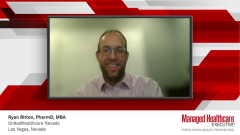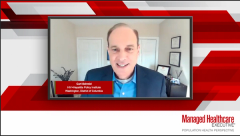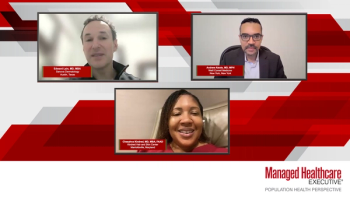
Preventive Health Guidelines and Payer Support for HIV PrEP
Updates to the US Preventive Services Task Force grade A recommendation for HIV PrEP therapy and payer response to supporting providers and pharmacists who prescribe therapies used as prophylaxis.
Episodes in this series

Ryan Bitton, PharmD, MBA: The USPSTF [US Preventive Services Task Force] recommendations have changed our strategies around PrEP [pre-exposure prophylaxis] because now it’s officially recommended, and we have preventive guidelines within our health plan to ensure that those recommendations are followed and accepted within the benefit design. What changed is now PrEP therapy is eligible for $0 co-pay, and so we made a path to ensure that we have a therapy at a $0 co-pay. That was the main thing. We didn’t have utilization management [UM], PA [prior authorization], on generic Truvada, but this paved the way for that to be $0. That was the main change that the task force recommendations had for our plan.
The biggest challenge with UM in general, and in this case, we’re really talking about prior authorization, is that it’s complicated. It’s another step in the process for the provider. I think it increases the amount of time it to get a patient on therapy who needs it. That delay and that hassle factor is probably the biggest barrier. When you don’t have utilization management, like we don’t have for the workhorse therapy of generic Truvada, there’s really not a huge barrier there. I think that as a payor, generic Truvada is substantially less expensive than other options out there. There’s a benefit to the plan and to the health care system in general from an affordability perspective by promoting the utilization of generic Truvada first. There’s some UM out there from a barrier perspective that says generic Truvada first and promotes that. I think that can be a barrier to providers and patients who may want to use a different therapy or who automatically go to a different therapy first.
I think as drugs on the medical benefit evolve and there are more of them, we’re doing a better job. The systems are set up relatively similarly. Obviously, pharmacy benefits process more transparently and quicker, but as far as prior authorization and task force recommendations and $0 co-pays, all of those can happen on both benefits.
We can do all things on both benefits, and so there really is no barrier to managing something on the medical benefit versus the pharmacy benefit. We can manage both benefits the same and have interplay between the benefits as needed. We’re only talking about one therapy at a time here, but we can refer to the pharmacy benefit, the medical benefit, approvals in the past, so there’s really not a difference per se in how we would approach therapies on either benefit.
Transcript edited for clarity.
Newsletter
Get the latest industry news, event updates, and more from Managed healthcare Executive.

























































